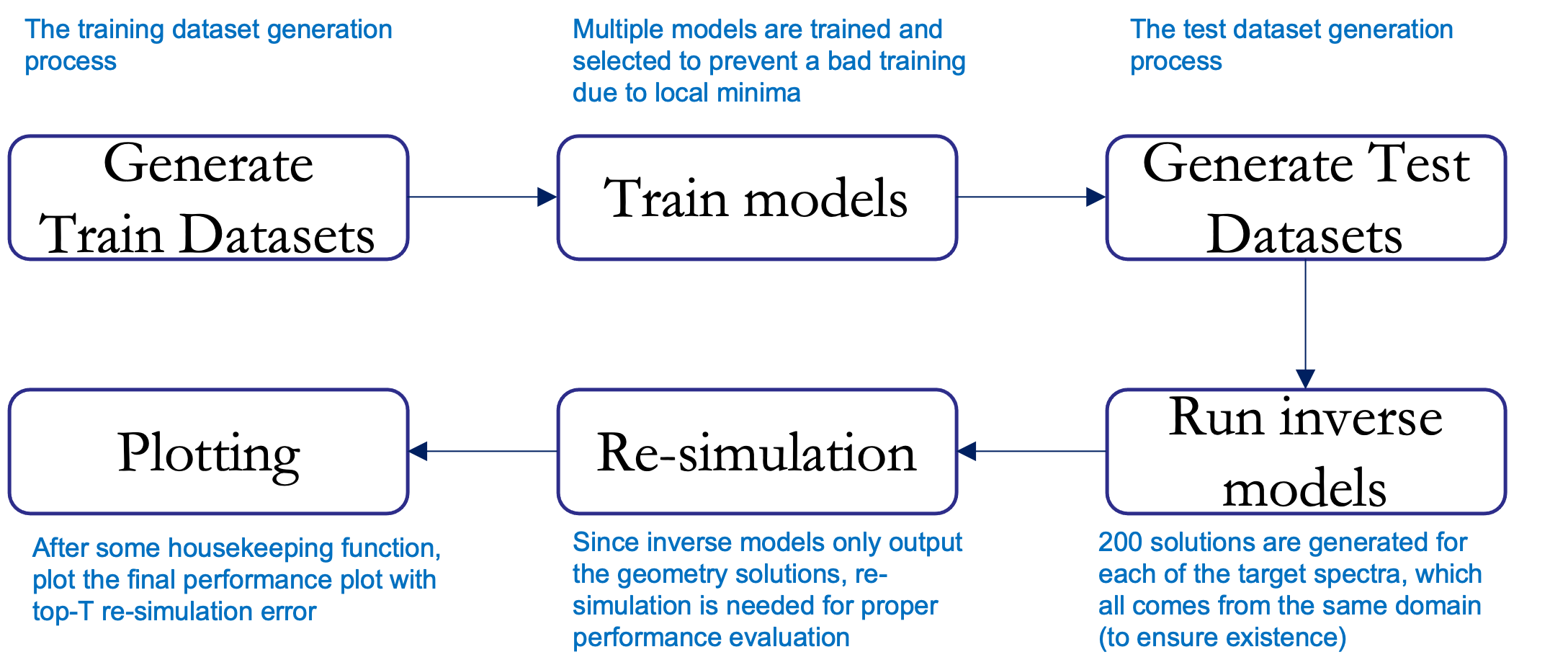Inverse deep learning methods and benchmarks for artificial electromagnetic material design
Deep learning (DL) inverse techniques have increased the speed of artificial electromagnetic material (AEM) design and improved the quality of resulting devices. Many DL inverse techniques have succeeded on a number of AEM design tasks, but to compare, contrast, and evaluate assorted techniques it is critical to clarify the underlying ill-posedness of inverse problems. Here we review state-of-the-art approaches and present a comprehensive survey of deep learning inverse methods and invertible and conditional invertible neural networks to AEM design. We produce easily accessible and rapidly implementable AEM design benchmarks, which offers a methodology to efficiently determine the DL technique best suited to solving different design challenges. Our methodology is guided by constraints on repeated simulation and an easily integrated metric, which we propose expresses the relative ill-posedness of any AEM design problem. We show that as the problem becomes increasingly ill-posed, the neural adjoint with boundary loss (NA) generates better solutions faster, regardless of simulation constraints. On simpler AEM design tasks, direct neural networks (NN) fare better when simulations are limited, while geometries predicted by mixture density networks (MDN) and conditional variational auto-encoders (VAE) can improve with continued sampling and re-simulation.
PDF Abstract

